The Art Detective
Inside the Secret L.A. Studio Building Where Some of the City’s Hottest Emerging Artists Have Built a Bustling Scene
Mohilef Studios in Los Angeles went from being a factory building into an artists' haven in just six years.
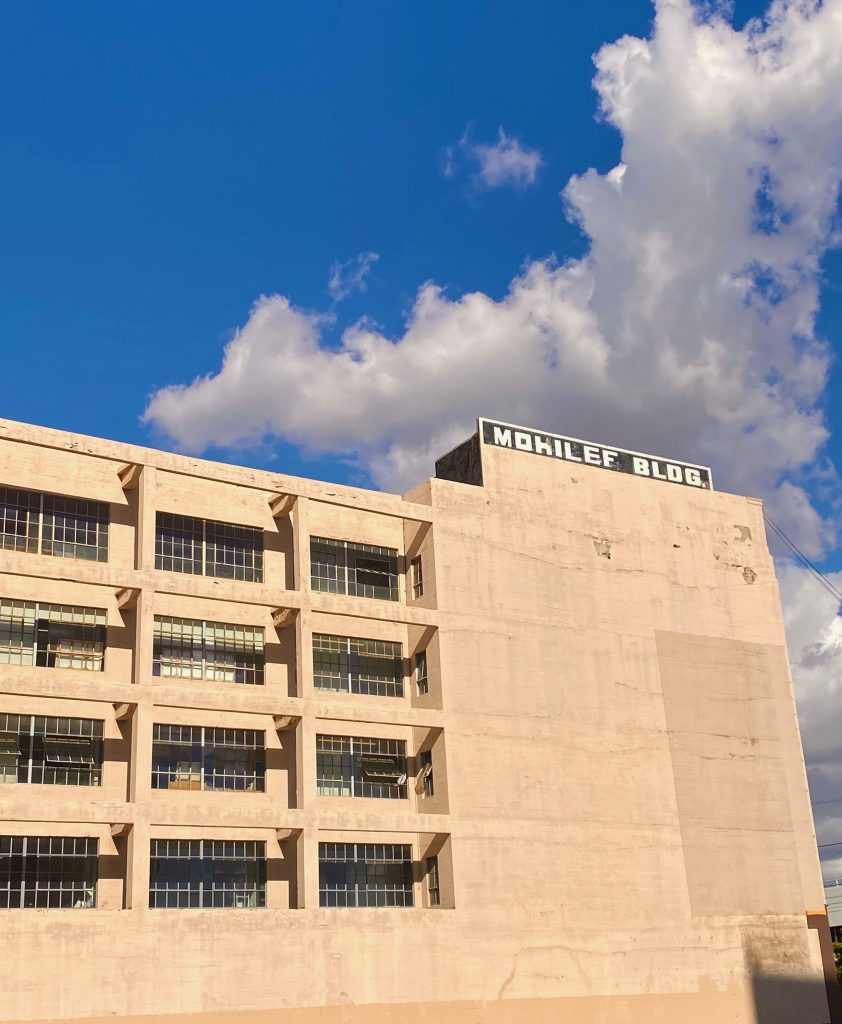
Mohilef Studios in Los Angeles went from being a factory building into an artists' haven in just six years.

Katya Kazakina

After artist Canyon Castator moved to Los Angeles from New York, he spent weeks walking around downtown in search of a studio. He found one in a five-story industrial building in the flower district. Crowned with an outside sign, the “Mohilef Bldg” was filled with textiles production facilities. The owner had never rented to artists.
Six years later, the building has been transformed into a bustling creative hub, with 35 emerging artists working in renovated studios on all but the ground floor. Light pours in through enormous windows, no longer covered with tarp. Crates with artworks move in and out. With its critical mass of in-demand artists, the building has become a destination for art-world insiders and tastemakers. Dubbed Mohilef Studios, it even has its own Instagram account.
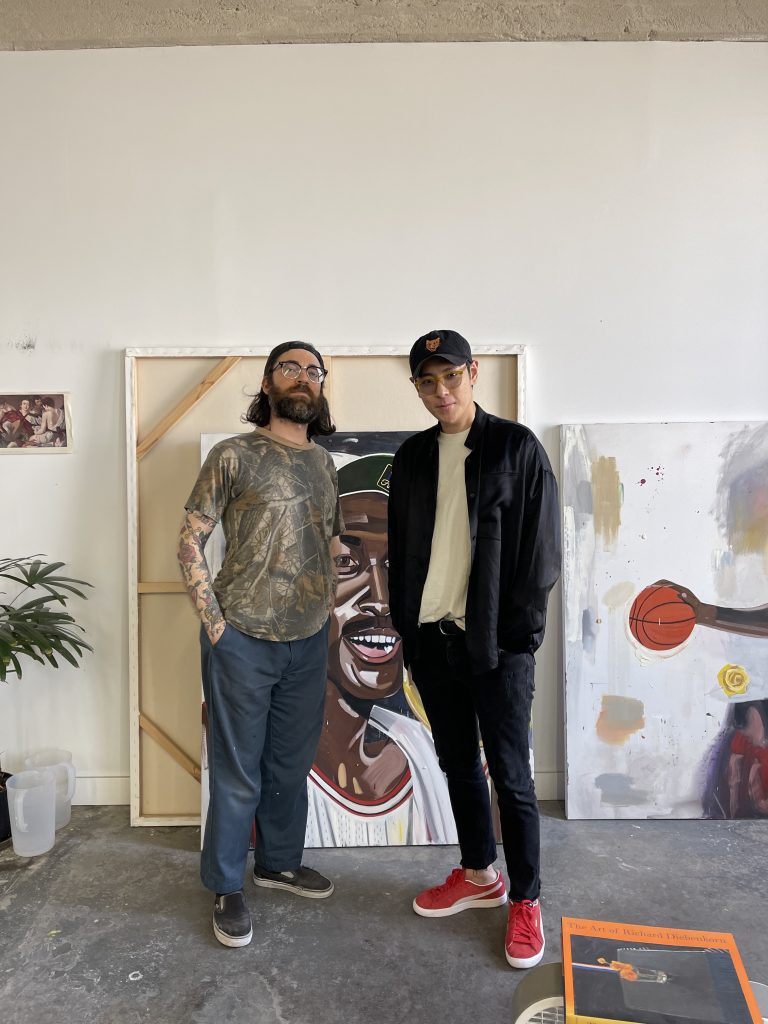
Artist Anthony Rianda and K-pop star T.O.P during a recent studio visit at the Mohilef Studios. Courtesy of Niels Kantor.
The timing of the development could hardly have been better, as collectors and emerging investors continue to speculate on young artists, drastically driving up prices since the beginning of the COVID-19 pandemic.
“It’s a good place to see it all,” said Niels Kantor, a local art dealer and artists’ manager, who’s renting studios in the building for painters Jason Mason and Anthony Rianda, and has organized tours for Hollywood producer Neal Moritz, 13-year-old Disney star Ariana Greenblatt, and Korean pop icon Choi Seung-hyun, known as T.O.P.
Works by Castator and other Mohilef residents, including Simphiwe Ndzube, Jess Valice, and Liz Markus, are featured in shows throughout Los Angeles this week, as the city becomes the epicenter of the global art scene, with Frieze online viewing rooms, the third in-person edition of Felix art fair, and the city’s first gallery weekend. Bill Brady Gallery’s new Los Angeles outpost is a case in point: of the 10 artists in its new group show opening Thursday, five have studios at the Mohilef. Even collectors Don and Mera Rubell stopped by this week.
“This week, it’s just wild,” said Castator, 31, a self-taught Texas native, who makes exuberant satirical paintings. “Everyone is in L. A. People come through for studio visits constantly.”
Castator saw the building’s potential soon after moving into the 800-square-foot studio he initially shared with his father, sculptor Mark Castator. It was a welcome change from his situation in New York, where Castator had an expensive, closet-size space in Bushwick and needed to work as a barista and an art handler to pay for it.
“It seemed like an uphill battle,” he said. “I wanted something different.”
The vision was to create an affordable resource for artists, with a sense of community and open flow of space and ideas.

Canyon and Mark Castator, who are behind the transformation of the industrial building in the Los Angeles flower district into a new art hub. Courtesy of the artist.
Whenever an existing tenant left, the Castators took over the space, renovated it, and found an artist to move in. They have the master lease for all four floors now. Canyon is the liaison between the artists and building owner, Paul Mohilef. Mark, who recently moved to New Zealand, does the bookkeeping.
The artist-run studio project came out of necessity. Canyon Castator didn’t go to art school and didn’t have a built-in network of friends when he moved to Los Angeles. He decided to build one.
The first artist to get involved was Austyn Weiner, Castator’s friend and fellow transplant from New York. Jess Valice, Castator’s former studio assistant, was another early arrival.
“Finding artists has become a crucial element,” he said. “I try to curate who’s next to who, creating these pockets of artists, who can benefit from each other as neighbors.”
Each floor has a different layout, reflecting the changing needs in an artist’s career, starting with smaller, open-plan studios to about 3,200-square-foot private spaces. Prices are around $1.25 per square foot, depending on specific features, Castator said.
“It sounds simple, but it’s hard to find a good studio, where you want to stay in, where the landlord isn’t a prick and you don’t have to worry about the Wi-Fi not working,” he said.
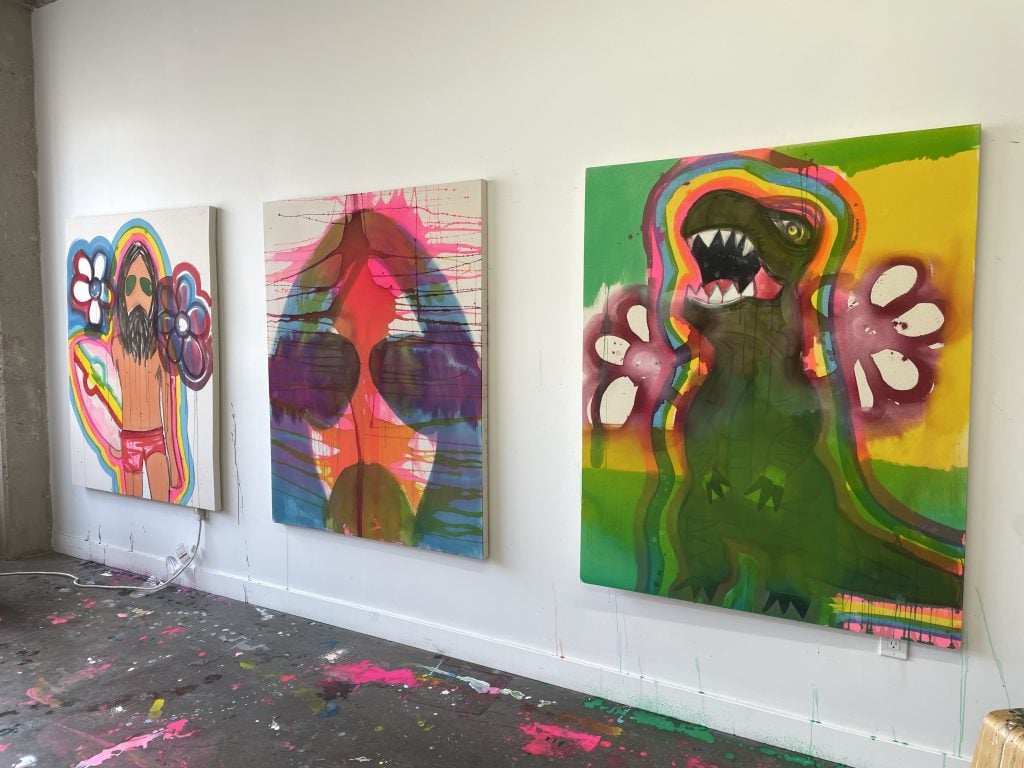
Painter Liz Markus’s studio at the Mohilef Studios. Courtesy of the artist.
Painter Liz Markus, a New Yorker who came to the City of Angels in 2018, is the latest tenant at the Mohilef Studios. Her previous studio in L.A. was across from a metal-crushing factory. The noise became unbearable, and she didn’t renew the lease during the pandemic. She connected with Castator through friends on Instagram and moved into the Mohilef in May.
“It’s been great,” she said. “I’ve never been in a building like this where there’s a sense of camaraderie. Canyon nurtures that.”
Castator created a group chat for the artists in the building and began hosting drinks at his studio after pandemic restrictions lifted. “I fully believe that just talking about art to other artists it’s so important,” he said. “Without it you are alone on an island.”
At a recent mixer, Markus ran into Ndzube, a South African artist with a current solo show at the Denver Art Museum, who took over Weiner’s old studio after she moved out (she wanted a ground-floor space to make huge paintings, Castator said). Later, Markus asked on the chat about an air brush technique she wanted to get into, and heard back from Tim Irani, her neighbor two doors down. He invited her to his studio and guided her through the process.
The cross-pollination extends to careers.
“My London gallery, they now always ask: Who moved into the building?” Castator said, referring to Carl Kostyal gallery. “They started working with four, five artists in the building, putting them into group shows and solo shows.”
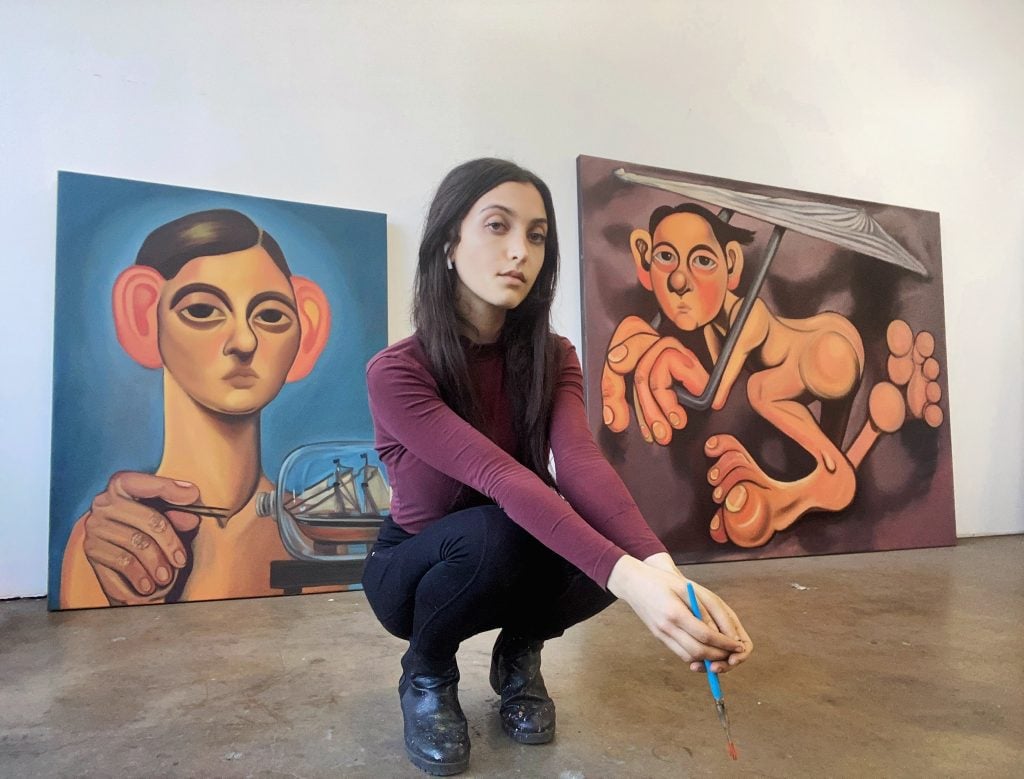
Jess Valice in her studio. Courtesy of the artist.
Weiner, whose paintings sold for as much as $90,000 at auction, introduced Valice, a self-taught college drop-out, to art dealer Bill Brady. In January, Valice had solo shows at Brady’s galleries in New York and Miami. Both sold out, with prices ranging from $5,000 to $18,000. Brady has been paying Valice’s studio rent at Mohilef. She will have a solo exhibition at his Los Angeles gallery in October.
“A lot of galleries say, we need fresh stuff,” Valice said. “Sometimes they go to universities. Here you have a community where you don’t need an M.F.A., people who are roughing it out and are totally dedicated.”
Same goes for collectors. “You visit one artist, but you also are able to see so many different artists at the same time, to learn about their work,” said Harry Hu, a Los Angeles-based art collector. “It gives the artists more exposure for their work, which is great.”
Castator is the first to admit that the building boosted to his career. He works with local and international galleries. Prices for his paintings, which are owned by collectors including KAWS, range from $25,000 to $35,000. M+B gallery will show his work at Felix this week. In the fall he’ll have a solo show at Carl Kostyal gallery in Stockholm.
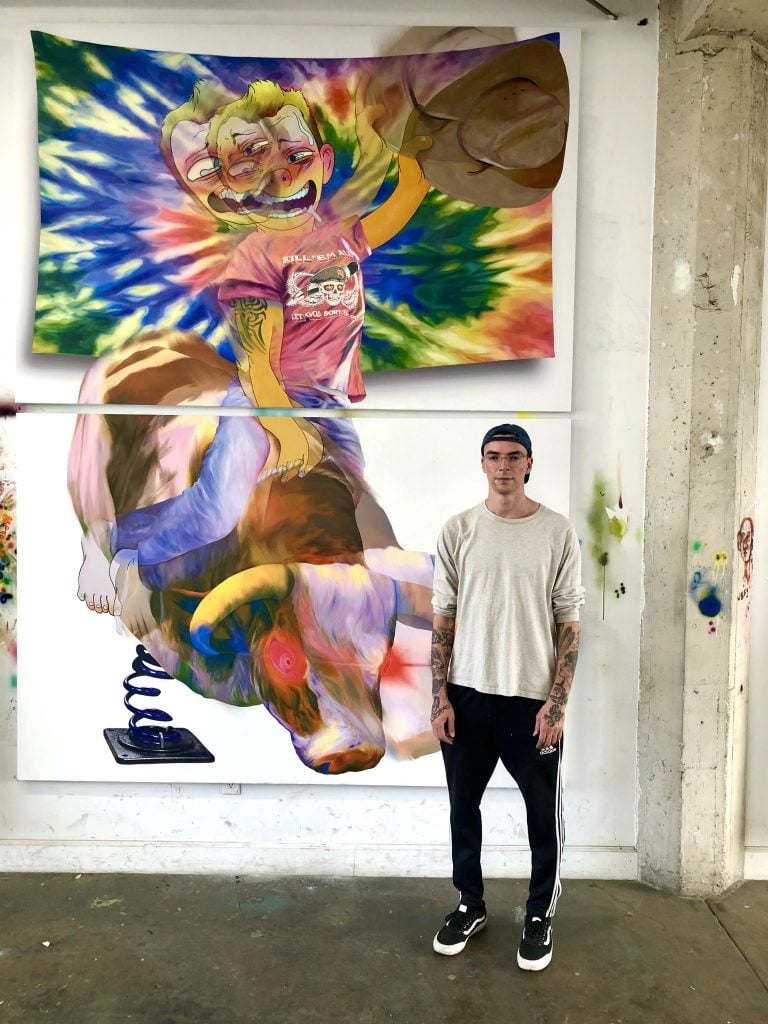
Canyon Castator, courtesy of the artist.
For Castator, it’s largely “a passion project,” he said. “If I wanted to make more money, I’d make more paintings.”
The studios have been so successful, Castator is expanding. He’s rented 4,000 square feet on the top floor of an industrial building on Washington Boulevard, to convert into artist studios. The owner of that building also owns the Mohilef.
“He was very reluctant in the beginning,” Castator said. “Now, I think, he’s sold.”